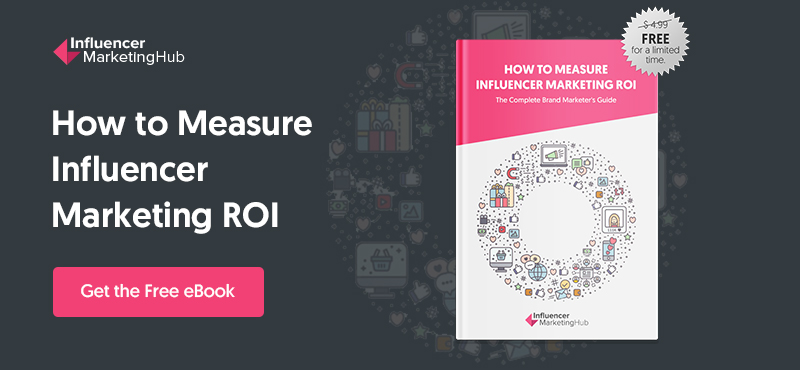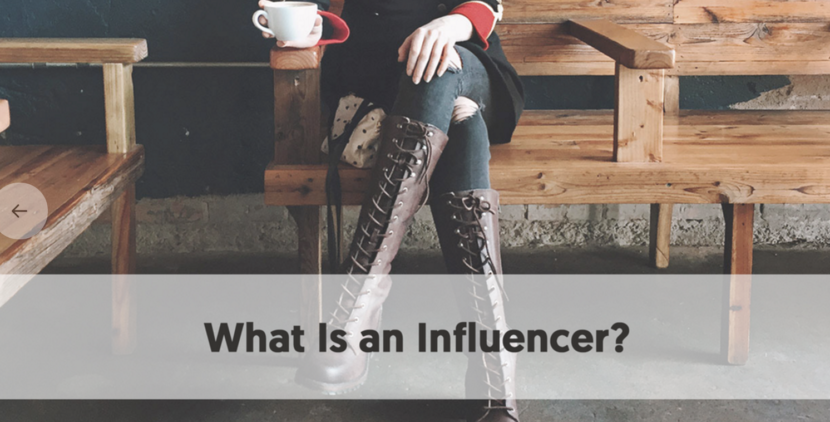What is an Influencer? – Factors that define a Social Media Influencer
If you hunt around this website, you will find an ever-increasing number of articles related to Influencer Marketing. This includes our take on What is Influencer Marketing: A Beginner’s Guide. But there is an even more fundamental question that needs to be considered before you think about participating in influencer marketing.
What is an influencer?
- An influencer is an individual who has the power to affect purchase decisions of others because of his/her authority, knowledge, position or relationship with his/her audience.
- An individual who has a following in a particular niche, which they actively engage with. The size of the following depends on the size of the niche.
It is important to note that these individuals are not simply marketing tools, but rather social relationship assets with which brands can collaborate to achieve their marketing objectives.
What Are Influencers in Social Media?
Over the last decade we have seen social media grow rapidly in importance. According to the August 2017 Global Digital Statshot from We Are Social and Hootsuite, 3.028 Billion people actively use social media – that’s 40% of the world’s population. Inevitably these people look up to influencers in social media to guide them with their decision making.

Influencers in social media are people who have built a reputation for their knowledge and expertise on a particular topic. They make regular posts about that topic on their preferred social media channels and generate large followings of enthusiastic engaged people who pay close attention to their views.
Brands love social media influencers because they can create trends and encourage their followers to buy products they promote.
Types of Influencers
The majority of influencers fit into the following categories, with the last category rapidly becoming the most important:
- Celebrities
- Industry experts and thought leaders
- Bloggers and content creators
- Micro Influencers
The bulk of social influencer marketing today occurs in social media, predominantly with micro influencers, and blogging. Industry experts and thought leaders such as journalists can also be considered influencers and hold an important position for brands. Then there are celebrities. These were the original influencers, and they still have a role to play, although their importance as influencers is waning.
Bloggers and influencers in social media (predominantly micro-bloggers) have the most authentic and active relationships with their fans. Brands are now recognizing and encouraging this.
Types of Influencers
Celebrities
Influencer marketing grew out of celebrity endorsement. Businesses have found for many years that their sales usually rise when a celebrity promotes or endorses their product. There are still many cases of businesses, particularly high-end brands, using celebrities as influencers.
The problem for most brands is that there are only so many traditional celebrities willing to participate in this kind of influencer campaign, and they are unlikely to come cheaply. The exception will if a firm makes a product that a celebrity already likes and uses. In that situation, the celebrity may well be prepared to use his influence to say how good he believes the product to be. I am sure many musical instrument producers benefit from musicians playing their instruments by choice.
One problem with using celebrities as influencers is if they may lack credibility with a product’s target audience. Justin Bieber may be highly influential if he recommended a type of acne cream, but would have little chance of influencing the buying patterns of those looking for a retirement village.
https://www.instagram.com/p/BdoOL5Gjip4/embed/captioned/?cr=1&v=12&wp=822&rd=https%3A%2F%2Finfluencermarketinghub.com&rp=%2Fwhat-is-an-influencer%2F#%7B%22ci%22%3A0%2C%22os%22%3A14631%7D
Celebrities may have many fans and gigantic social media followings. However, it is debatable exactly how much real influence they hold over those who follow them.

Industry Experts and Thought Leaders
Industry leaders and thought leaders gain respect because of their qualifications, position, or experience about their topic of expertise. Often, this respect is gained more because of the reputation of where they work. For instance, a journalist at a major newspaper is probably no expert on the subjects he writes a news report on, but he is respected for being a good enough writer to work as such a prestigious publication.
These experts include:
- Journalists
- Academics
- Industry experts
- Professional advisors
If you are able to gain the attention of a journalist in a national newspaper, who in turn talks positively about your company in an article, then you are using him as an influencer in much the same way as you would a blogger or a social media influencer. There is an added bonus in this situation in that the journalist will most probably write his report for free.
Bloggers and content creators often work with industry leaders and thought leaders, and it is not uncommon to see them quoted in blog posts and even used in social media campaigns. The line between traditional media and social media is blurring.
Bloggers and Content Creators
Blogging has been connected to influencer marketing for some time now. There are many highly influential blogs on the internet. If a popular blogger positively mentions your product in a post, it can lead to the blogger’s supporters wanting to try out your product.
Many bloggers have built up sizeable followings in specific sectors. For instance, there are highly influential blogs about personal development, finance, health, childrearing, music, and many other topics, including blogging itself. The key thing successful blogs have in common is the respect of their readers.
A variation on having a blogger write something that recommends your product is to participate in guest posting. If you can grab a guest posting spot on a large blog, you can control the content, and you will normally be allowed to place a link to your own site in your author bio.
If a blog is large and influential enough, you may be able to buy a sponsored post on their site. This allows you to either write a post yourself or heavily influence the blogger to write a post on your behalf. Unlike a casual mention in a blogger’s post or a guest post you have written, you will have to pay for a sponsored post (and it is likely to be labeled as such). However, this hasn’t harmed the results for many firms who have sponsored posts on blogs. Generation Z, in particular, seems to be immune to the Sponsored Post tag, and as long as the product aligns with the blog’s core audience, there shouldn’t be a problem.
Of course, a blog is not the only type of popular content on the internet. Another popular type of content is video. In this case, rather than each videomaker having their own site, most create a channel on YouTube. Brands often align with popular YouTube content creators.
Of course, bloggers and YouTubers rarely rely solely on their existing audiences to just turn up to their site hoping there is new material. They usually promote new posts or videos heavily on social media – which makes most of these bloggers and content creators micro influencers as well.
Micro Influencers
Micro influencers are normal everyday people who have become known for their knowledge about some specialist niche. As such, they have usually gained a sizeable social media following amongst devotees of that niche. Of course, it is not just the number of followers that indicates a level of influence, it is the relationship and interaction that a micro influencer has with his followers.
It is possible that a micro influencer is not aware of the existence a company before that company tries to reach out to them. If that is the case, the company will have first to convince the influencer of its worth. Micro influencers have built up specialist followings, and they will not want to harm their relationship with their fans if they are seen to promote a lemon.
This requirement that any relationship between micro influencers and brands having to align with target audiences does mean that influencers are often picky about who they work with. Some micro influencers are happy to promote a brand for free. Others will expect some form of payment. Regardless of the price, an influencer is unlikely to want to be involved with an “inappropriate” brand for their audience.
The nature of influence is changing. Micro influencers are becoming more common, and more famous. Some have risen from virtual obscurity to being nearly as well known as traditional celebrities. This is particularly the case for Generation Z who spend more time on the internet than watching television or going to sports or movies.
In all reality, micro influencers are the influencers of the future. The internet has led to the fragmentation to the media into many small niche topics. Even if you are into something relatively obscure, you are likely to find a Facebook group or Pinterest board devoted to it. And it is in these niche groups and boards that micro influencers establish themselves as genuine influencers. Content Source: https://influencermarketinghub.com/what-is-an-influencer/




